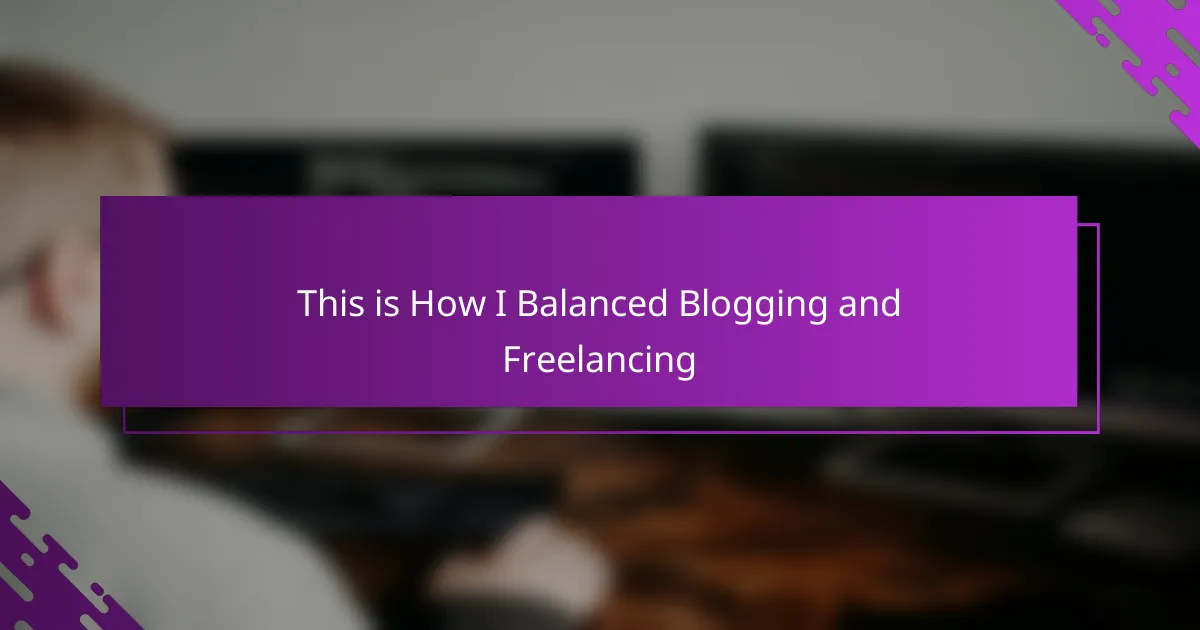Key takeaways
- Combining personal blogging with freelancing enhances creativity and opens new professional opportunities.
- Effective time management strategies, such as scheduling and prioritizing tasks, help maintain balance between blogging and freelancing.
- Consistency in content creation can be achieved through realistic goal setting and using tools like editorial calendars.
- Self-compassion and open communication with clients and readers are key to managing expectations and reducing stress.
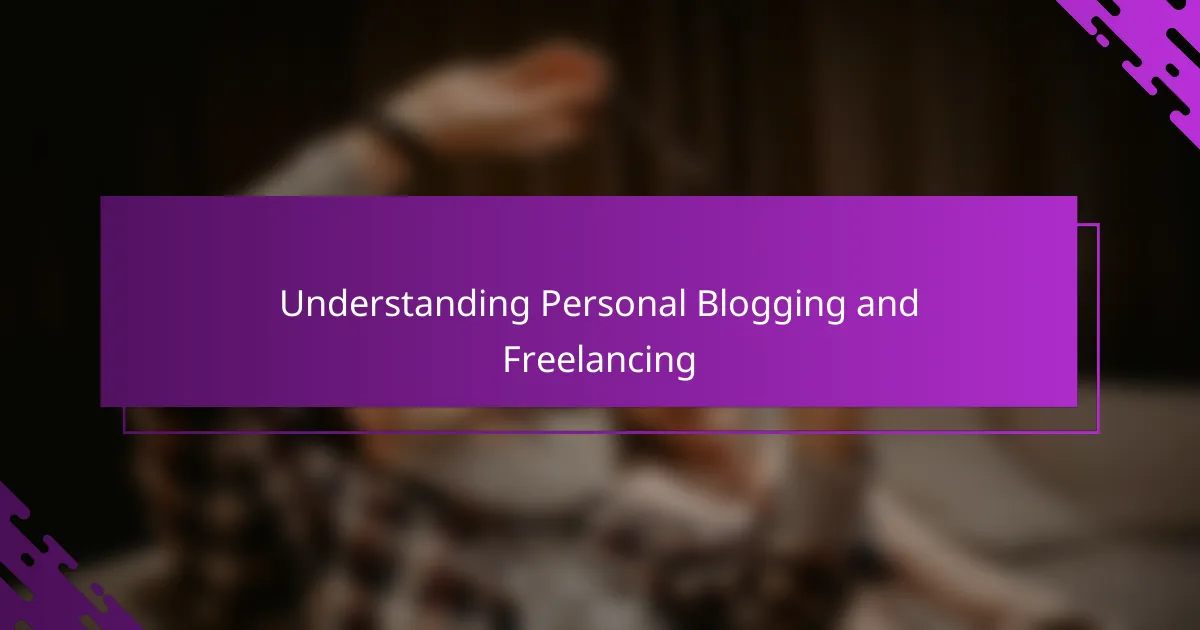
Understanding Personal Blogging and Freelancing
Personal blogging, to me, is more than just putting words on a page; it’s a way to share parts of my life, thoughts, and experiences with others. Have you ever noticed how writing about something personal feels like having a quiet conversation with a close friend? That’s exactly the kind of authentic connection personal blogging creates.
Freelancing, on the other hand, demands a different kind of discipline and focus. It’s about managing projects, meeting deadlines, and delivering what clients expect while juggling the unpredictable nature of freelance work. I often find myself switching hats—from a storyteller in my blog to a problem-solver in my freelance tasks—and it can be both exhilarating and exhausting.
Understanding these two worlds helped me realize that while personal blogging feeds my creative soul, freelancing feeds my professional growth. How do you align your passions with your work? For me, acknowledging their unique demands was key to finding a balance that works.
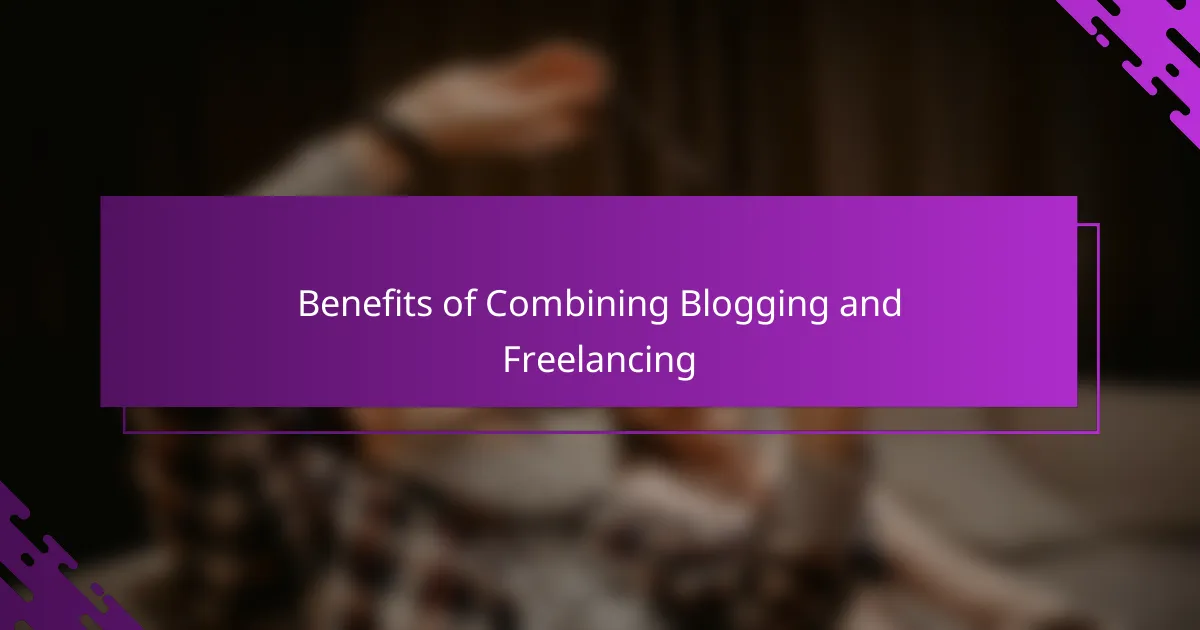
Benefits of Combining Blogging and Freelancing
One of the biggest perks I discovered by combining blogging and freelancing is how they complement each other creatively and financially. Blogging lets me experiment with ideas and topics I’m passionate about, which, surprisingly, often leads to new freelance opportunities. Have you ever noticed how sharing your true voice online can attract clients who appreciate your unique style?
Balancing these two roles also gave me a sense of control over my schedule and income. Freelancing can be unpredictable, but my blog provides a consistent space to express myself and build an audience. It’s like having a safety net—a creative outlet that also opens doors for professional growth.
What truly stood out for me is the boost in confidence from juggling both worlds. Writing for my blog taught me to trust my voice, which made client communication smoother and more authentic. This synergy feels like a powerful cycle: the stronger my blog, the more valuable my freelance work becomes, and vice versa.
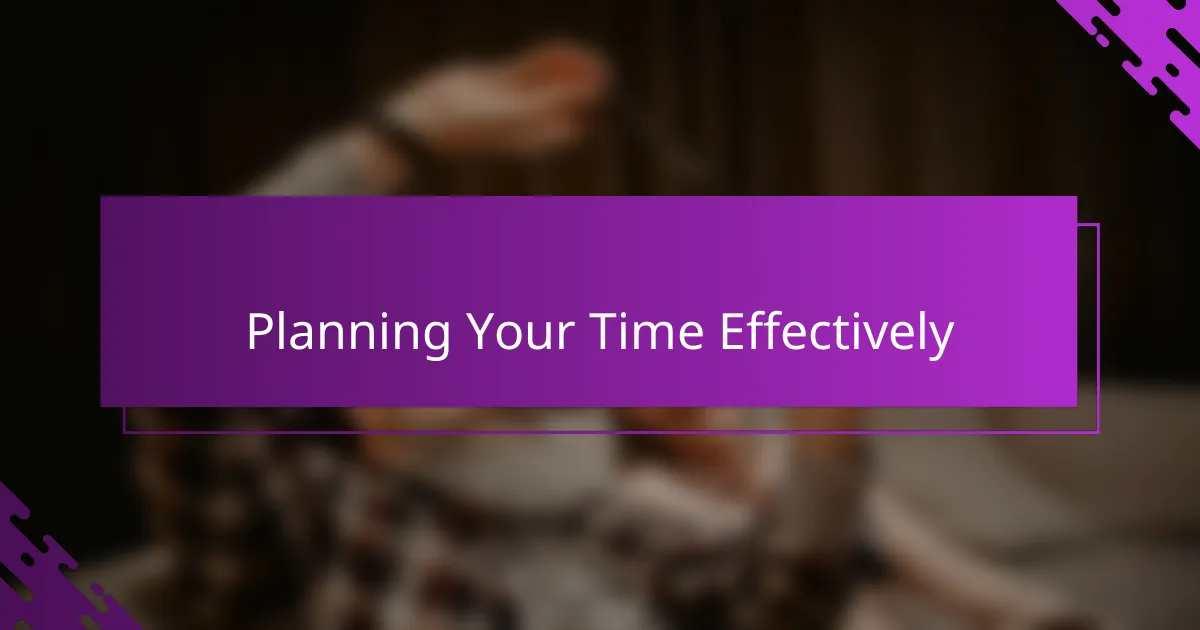
Planning Your Time Effectively
When I first started balancing blogging and freelancing, I quickly realized that without a solid plan, time would slip through my fingers. So, I began blocking specific hours for each task, like setting aside mornings solely for writing blog posts and reserving afternoons for freelance projects. Have you ever tried scheduling your day down to the hour? It might sound rigid, but I found it surprisingly freeing—it helped me focus without feeling overwhelmed.
I also learned to prioritize by asking myself, “What must get done today?” versus “What can wait?” This simple question became my daily checkpoint. Some days, a blog idea ignites my creativity and deserves immediate attention, while other days, chasing a client deadline takes precedence. Balancing these priorities gave me a clearer sense of control and reduced that familiar stress of juggling too many things.
Lastly, I embraced flexibility within my plan. Life isn’t always predictable, and neither is freelancing. When unexpected tasks or inspirations popped up, I adjusted my schedule rather than fighting it. This approach kept me motivated because I wasn’t shackled to a strict routine—I was steering my time with intention, not restriction. Have you found that a flexible plan sometimes works better than a rigid one? For me, it’s been the key to sustainable productivity.
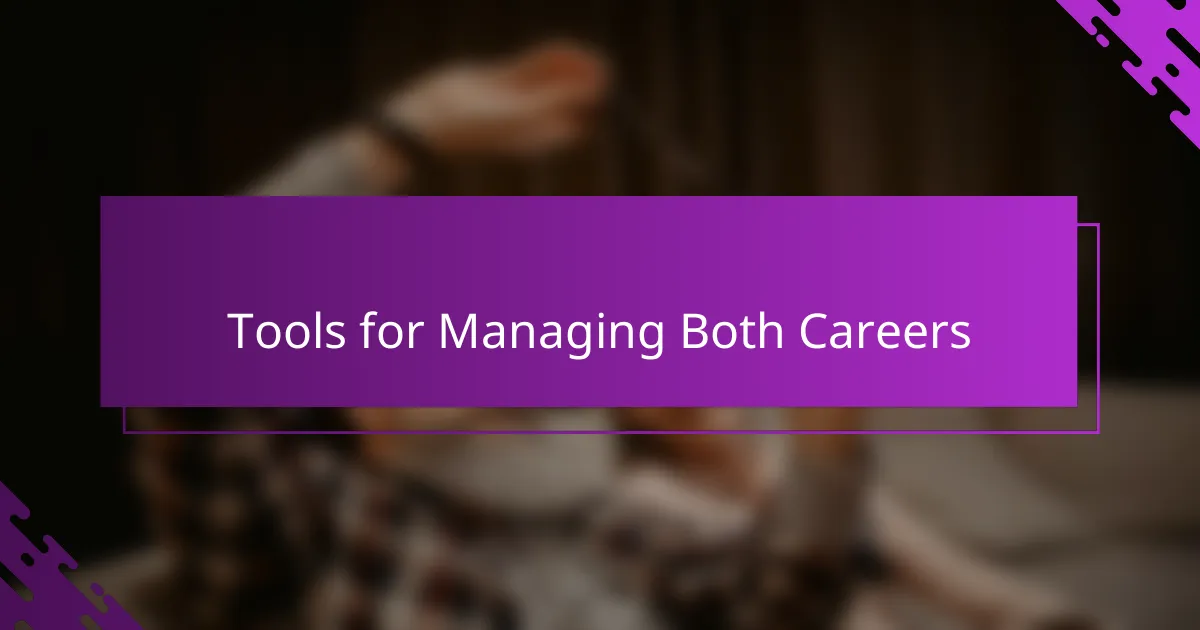
Tools for Managing Both Careers
When it comes to managing both blogging and freelancing, using the right tools made all the difference for me. I rely heavily on Trello to keep track of blog ideas, client projects, and deadlines in one place. Have you ever felt overwhelmed by too many open tabs or scattered notes? For me, having a visual board where I can drag and drop tasks feels like organizing my thoughts as much as my work.
Another lifesaver has been Google Calendar. Blocking specific times for writing and client meetings helps me stay disciplined without feeling trapped. I remember a week when I missed a blog deadline because I didn’t slot time for it in my calendar—and that taught me the huge value of scheduling not just meetings, but creative time too. Don’t you find that seeing your day planned out visually actually motivates you to stick to it?
Lastly, I can’t overlook the power of distraction blockers like Forest or Focus@Will. When juggling freelance tasks and blog posts, my mind tends to wander easily. Using these apps creates a kind of digital bubble where I can focus deeply without slipping into social media or endless email checks. Have you tried tools that guard your attention? For me, they turned chaotic work sessions into productive bursts of creativity.
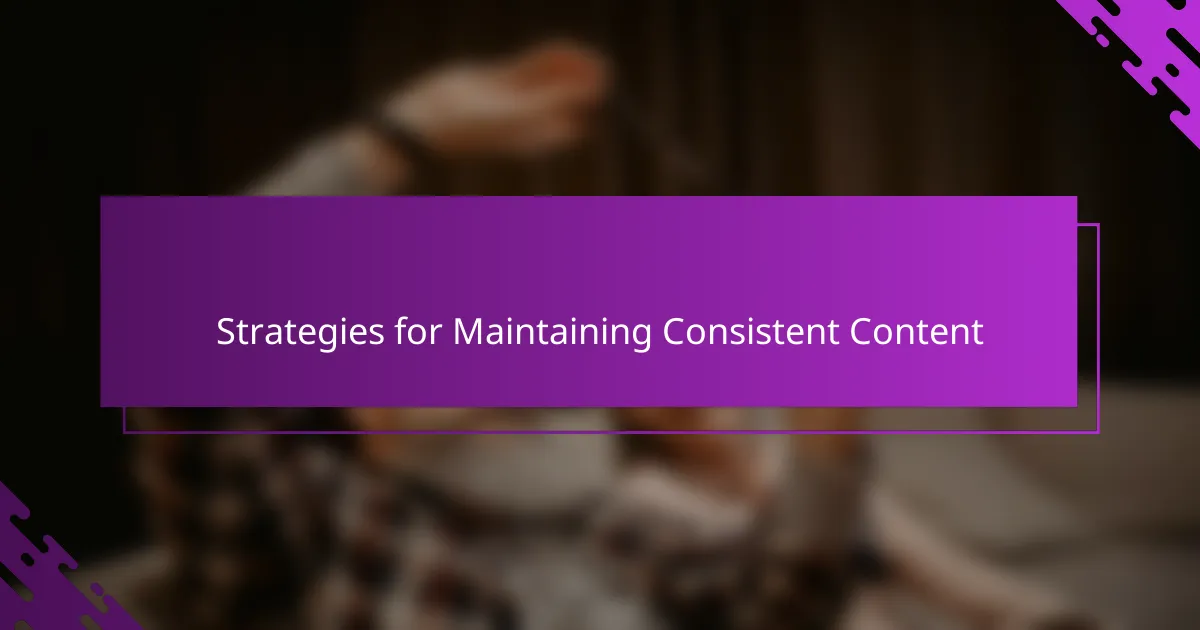
Strategies for Maintaining Consistent Content
Consistency wasn’t something that came naturally for me; it was a habit I cultivated by setting realistic goals. I started by aiming for just one well-thought-out blog post each week rather than overwhelming myself with daily deadlines. It taught me that steady progress beats burnout every time. Have you ever felt crushed under the weight of trying to do too much at once? Slowing down helped me keep my content genuine and sustainable.
Another strategy that transformed how I maintained consistency was batching content. I would dedicate a few hours solely to brainstorming and drafting multiple blog posts at once. When deadlines loomed or freelancing got hectic, I still had material ready to go. This buffer gave me peace of mind and kept my readers engaged without feeling pressured. Does it sound like a lot of upfront work? From my experience, that initial investment paid off massively in reducing stress.
Finally, staying organized with an editorial calendar became my secret weapon. It wasn’t just about marking dates but tracking ideas, progress, and publishing schedules. Having everything mapped out visually kept me accountable and motivated, especially on tougher days when inspiration was low. I’ve found that knowing what’s coming next can fuel the momentum to keep going. How do you keep yourself on track—do you use tools, notes, or instincts? For me, combining a calendar with flexibility made consistency achievable.
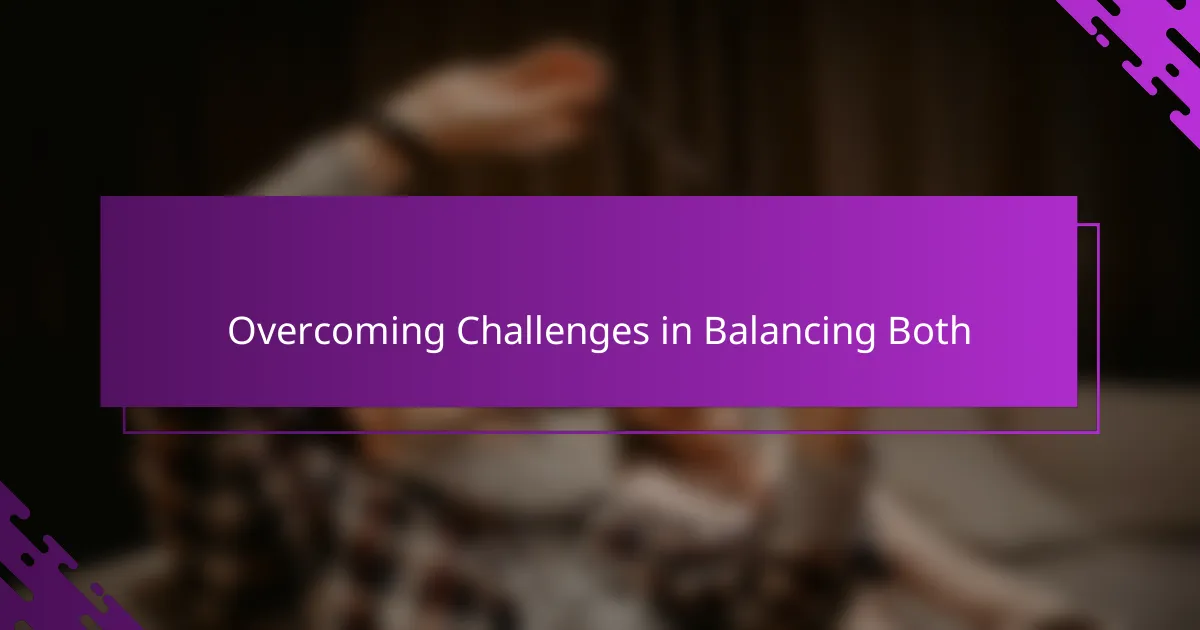
Overcoming Challenges in Balancing Both
Balancing blogging and freelancing wasn’t without its tough moments. I remember evenings when deadlines clashed with my desire to write something authentic for my blog—it felt like choosing between two parts of myself. Have you ever faced that inner tug-of-war? What helped me was acknowledging that sometimes one had to take priority, and that’s okay.
Distractions and burnout also crept in more often than I liked. There were days I felt drained, unable to summon the energy to meet a client’s expectations or craft a heartfelt post. I realized then that setting boundaries—like stepping away from the screen or taking short breaks—wasn’t a luxury but a necessity for maintaining quality in both areas.
Lastly, juggling different types of writing styles threw me off balance. Shifting from formal client work to casual, personal storytelling required constant mental switching. I asked myself: how do I keep my voice authentic without losing professionalism? The answer came through practice and patience—allowing myself to embrace the unique demands of each task without self-judgment. That mindset shift made all the difference.

Lessons Learned from My Experience
One lesson that stood out for me is the importance of self-compassion. I used to push myself relentlessly, thinking I had to excel equally in blogging and freelancing every single day. But I learned that accepting my limits and celebrating small wins kept me motivated without burning out. Have you ever felt like you’re not doing enough? Trust me, giving yourself grace can change everything.
Another insight came from embracing imperfection. Early on, I chased the idea of perfect posts and flawless client work, which only drained my energy. Over time, I realized progress beats perfection—sometimes a “good enough” blog post or freelance draft is exactly what I need to keep moving forward. Isn’t it liberating when you let go of unrealistic standards?
Finally, communication became a game changer. Sharing my schedule and priorities honestly with clients and readers helped manage expectations and reduced stress. I remember a time when being upfront about my availability opened doors to more flexible deadlines, which felt like a breath of fresh air. Have you tried being transparent about your limits? From my experience, it builds respect and makes balancing easier.
